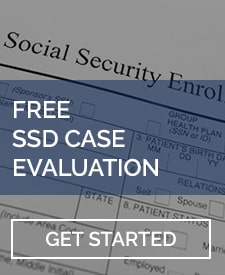Acute myelogenous leukemia, or AML leukemia, is a type of blood or bone marrow cancer. This is a rapidly forming cancer, starting in the bone marrow and quickly disseminating throughout the body. The word “acute” means rapid formation and, without treatment, it means it could be terminal after only a few months. The American Cancer Society estimates in 2018 there will be approximately 11,000 deaths due to AML leukemia. This condition generally affects adults over the age of 45, with the average age of the patient being 68 years of age. AML leukemia is quite uncommon, with your chance of risk being less than 1%.
Like any condition, there are steps to determining eligibility for disability. As for a medical prognosis, early detection is key. The basic symptoms of AML leukemia are weight loss, fatigue, fever, night sweats, and loss of appetite. As you can imagine, these symptoms are quite vague and could account for a number of conditions. The best way to detect this condition, or one of the many others that could be causing these symptoms, is to reach out to your physician for testing as soon as possible. Your doctor will likely perform a physical examination, paying close attention to your eyes, mouth, skin, lymph nodes, liver, spleen, and nervous system. Your doctor will also likely order blood testing to check your blood cell counts. All leukemias affect the number of blood cells, so the best way to diagnose any type of leukemia, not just AML leukemia, is to obtain blood testing for your levels of red and white blood cells. Your doctor may also test your bone marrow if the blood testing comes back abnormal.
Because AML leukemia is a group of related diseases, there are multiple forms of treatment along with different outlooks on the treatment. Once this form of cancer is diagnosed, your provider will determine whether you should undergo chemotherapy, targeted drug therapy, stem cell transplant, radiation therapy, or even surgery. Again, the type of treatment you will receive will depend upon the exact condition you are suffering from. For some, treatment may eliminate the leukemia altogether, while others will need to continue treatment indefinitely. No matter which group you are in, you are likely to suffer side effects from your treatment, specifically if you undergo chemotherapy or radiation.
Throughout this process, from the initial diagnosis to receiving treatment, you will likely not be able to work. This is due to not only the severity of your condition including its physical and mental impact upon your body but also due to the extensive treatment regimen your doctor will have placed you on requiring you to miss a significant time from work. If you fall into this category, you should apply for the Social Security Disability Insurance program.
Social Security Disability Insurance, or SSDI, is a federally mandated program managed by the federal government. It is a safety net put in place for individuals who have worked their whole life but find themselves in a situation where a medical condition or conditions are preventing them from continuing to work for a certain time frame. If you are diagnosed with AML leukemia and you apply for SSDI, your claim will likely be fast-tracked due to the severity of your condition. If the claim has not been fast-tracked, then you should seek assistance from an experienced disability attorney so that your claim can be flagged for the Social Security Administration, or SSA.
When the SSA reviews your claim and eligibility, the organization will first consider whether you are currently working or earning an income. If you are earning over substantial gainful activity, or SGA, you will be found technically disqualified. This is because SSA has determined disability benefits are only available for people who are incapable of earning over a certain amount of money per month.
If you are found to be earning less than SGA, the SSA will then consider whether you have a severe impairment. A severe impairment is any condition that poses more than a minimal impact upon your ability to work. This threshold is quite low, with the benefit of the doubt typically going in favor of the claimant.
The third consideration is whether you meet one of the SSA’s listed conditions. This list includes what the SSA believes to be the most severe conditions that pose a barrier to working. AML leukemia will be evaluated under Listing 13.06 for leukemia. To prove you meet a listing, you must have sufficient medical evidence to support your diagnosis. This would include pathology reports, blood testing, and any other types of testing your provider have performed.
There are two potential avenues to meet or equal this listing:
- The first way is by showing you suffer from acute leukemia. If you can prove this, you will be considered disabled for a period of 24 months at least from the date of diagnosis or relapse. Or, if you undergo a stem cell transplant you will be considered disabled for at least 12 months from the date of transplant.
- The second way to meet this listing is to show you suffer from accelerated or blast phase leukemia. Again, both ways require medical evidence to support a diagnosis along with the type of treatment required. When suffering from AML leukemia, as long as you are receiving medical treatment, it tends to be an easy determination for the SSA to find you meet a listing. The time when things become tricky is once you pass the 24 months mark. Then, you would need to show the SSA the condition is still affecting your physical and/or mental ability to work. This is where determining your residual functional capacity comes into play.
If you are found not to meet one of SSA’s listed conditions, your condition will then be evaluated to determine your residual functional capacity or RFC. This means that the SSA determines your maximum physical and/or mental capabilities. Once the SSA determines your RFC, the organization will consider whether the RFC precludes you from performing your past work as well as from performing any other work in the national economy.
Suffering from AML leukemia is not a death sentence. However, it certainly will require a significant amount of treatment; treatment that should be performed sooner rather than later. If you have received a diagnosis of AML leukemia, it is recommended you apply for SSDI benefits as soon as possible. It is also recommended you seek counsel from an experienced disability attorney to not only manage the stress of this application process but also to ensure you receive your benefits expeditiously.




